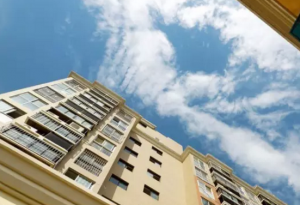Expert summary! Reasons for leaks in exterior walls and points for waterproof design!
date: 2020-03-12 15:22:30Source: RG JIAYEViews: 1364

Causes of external wall leakage
1. Leakage due to design factors
(1) Many designers do not pay attention to detailed and large-scale design, such as the sill slope, the beak, the drip trough, the wall pipe, the embedded pipe fittings for the exterior wall, the windows and doors, the joints between the curtain wall and the wall, etc., and there is no special support. The collection of exterior wall design and construction drawings is used as a reference, and the design is simplified in these aspects.
(2) The interface connection of different materials is ignored in the specific design. For example, the outer wall is designed with layers of decorative lines, and the elevation of the top of the line is the same as the elevation of the top of the beam. Because the temperature expansion coefficient of the external wall brick and the concrete beam is very high, cracks are likely to occur, so that the upper part of the line leaks water. For the same reason, the root of the daughter’s wall is often easier to crack and seep. Exterior wall facing bricks (small) are designed with fine stitching, so that no sealing material can be embedded between the bricks, resulting in water leakage.
(3) Insufficient attention has been paid to the waterproofing of external walls of high-rise buildings. As the height of the building increases, the wind pressure increases, leading to an increase in the leakage rate of the external wall, reducing the use of the external wall as the envelope structure and the performance of thermal insulation, and also leading to a reduction in the service life of the external wall. The masonry and screed for non-load-bearing walls is made of water-permeable materials.
(4) In the design, the architect did not pay much attention to the waterproofing of the external wall. The external wall design did not have a waterproof concept and function setting, which greatly reduced the functional coefficient of the building. When designing, full consideration should be given to the structural modeling and the characteristics of waterproof materials, the correct selection of waterproofing materials, to eliminate stress cracks as much as possible, and the construction and modeling are beneficial to the waterproofing of roofing and exterior walls.
2. Leakage caused by materials and construction factors
(1) Leakage caused by the quality of masonry. Involving the quality of masonry mortar, mortar admixtures, and masonry masonry. In the preparation of the mortar, the content of the admixture is too large, and the masonry is maintained and maintained regardless of the construction temperature, which will cause water loss and powderiness and no strength, which will affect the compactness and strength of the mortar and affect the bonding of the mortar and the brick. In addition, the masonry is not constructed in accordance with the operating procedures, the mortar joints are not full enough, there are hollow drums, the bricks are not wet enough, or the bricks are built with dry bricks. The bricks and mortar are poorly bonded to form separation gaps, which are easy. Hidden danger of leakage.
(2) Grassroots cleaning is not in place. Before the bottom layer is plastered, the base layer should be treated to remove floating ash, loose mortar, greasy dirt, cement slurry, etc., and rinse it with water. For smooth surfaces, you can chisel and then plaster. Otherwise, the bottom layer can easily bulge, leaving a hidden danger of seepage.
(3) The bottom ash of the bottom wall of the external wall and construction. The main factors affecting the construction quality of the outer wall primer are the strength of the bottom ash, the quality of the sand, the quality and admixture of the admixture, and the moisture retention and maintenance, followed by the thickness and compactness. When the thickness of the bottom ash is greater than 20mm, layer construction and waterproof The bottom ash falls down and cracks, and then the bottom ash is handled properly. The plastering of the bottom of the external wall is generally in the order of construction from top to bottom. However, when the plastering is performed, an outer high and inner low connection is formed, which is easy to leave hidden dangers of water leakage. When the lower layer is plastered, brush the cement slurry to facilitate the bonding of the upper and lower layers.
(4) Surface layer construction. Before the surface layer is constructed, the quality of the bottom layer should be checked. Any hidden dangers such as empty drums, cracks, and self-falling cracks must be repaired in place to meet the requirements. The surface layer should be repeatedly rubbed during construction to ensure compactness. For those who are facing the bricks on the outer wall, the mortar of the layer should be full and there should be no bulging. Otherwise, a water storage bag will be formed and the bricks will be compacted to avoid seepage.
3. Treatment of detailed structure
Improper handling of detailed structures and improper selection of materials can cause hidden dangers of water seepage. Such as scaffolding rod fixing holes, window frame outer protective film, lift rod fixing holes, overhanging rafter member corners, shear wall screw empty wall holes, county picking lines and dripping lines, window seam treatment around windows, patio pouring beam pouring Construction steps and coordination of detailed structures such as ramming, crack treatment of door and window frame tops, changes in temperature of structural layers, and gaps of aluminum alloy composite windows.
4. Secondary decoration
When users decorate indoors and outdoors, they often make holes in the outer wall to damage the main structure and the inner and outer layers, forming a hidden danger of water leakage on the outer wall.
5. Selection and construction of waterproof materials
Waterproof materials for exterior walls are mainly rigid waterproof materials, flexible waterproof materials, sealed waterproof materials, and waterproof materials between rigid and flexible waterproof. The selection of waterproof materials should consider the characteristics and applicable parts of the waterproof material, the adhesion and waterproof effect of the waterproof material to the base layer, the adhesion of other materials to the waterproof material, and the compatibility of the waterproof material with other building materials to ensure that The material is waterproof, durable and anti-aging. Otherwise, improper selection of waterproof materials and infill materials will cause hidden dangers of external wall leakage.
The second is the construction of waterproof materials. The construction and maintenance of the characteristics of the waterproof materials are not in accordance with the design requirements, and they are also the hidden dangers of external wall leakage.
Structural design of exterior wall joints
1. The waterproof layer of the external wall should extend to the door and window frames, and a groove should be reserved between the waterproof layer and the door and window frames.
2. For the window sash of the external wall, the installation gap at the lower opening of the window shall be fully reserved according to the thickness of the external window sill to ensure that the rainwater under the window can be smoothly discharged.
3. The awning should be set with an external drainage slope of not less than 1%. The lower edge of the outer opening should be a drip line. The waterproof layer at the junction of the awning and the outer wall should be continuous. The waterproof layer of the awning should be turned down to the drip line along the outer opening. .
4. The balcony should be set with a drainage slope of not less than 1% toward the water drop opening. A groove should be left around the water drop opening.
5. An additional layer of synthetic polymer waterproof coiled material should be added to the deformation seam. The two ends of the coiled material should be fully adhered to the wall. The width of the fully adhered material should not be less than 150mm, and it should be nailed and fixed.
6. Pipes passing through the external wall of the wall should be sleeved. The sleeve should be high inside and low outside. The slope should not be less than 5%.
7. In-situ reinforced concrete or metal roofing should be used for daughter wall roofing. The roofing should be sloped inward. The slope should not be less than 2%. When concrete roofing is used, the waterproof layer of the external wall should extend to the drip line on the inside of the roof. When metal is pressed, the waterproof layer of the outer wall should be the top of the pressure, and the metal should be fixed with special metal accessories.
8. Frame-filled external walls, especially concrete hollow block external walls, shall be qualified mechanism blocks, and shall be built in strict accordance with relevant regulations to ensure the quality of the masonry, and the insulation layer shall be crack-resistant to ensure external The dependability of the finish.
9. The leveling layer is suitable for separating seams on the side beams and columns of the concrete, and should not be placed on the brickwork to meet the deformation requirements of the wall. Leveling layer thickness.
10, The facing layer of the facing brick should be provided with a split seam, the position should be aligned with the split seam of the screed layer, the width of the seam is 15mm, and the depth of the seam is to the waterproof layer of the outer wall.
11. Concrete waterproof flanges should be set in the upper wall of the lines protruding from the external wall, air-conditioning panels, awnings, etc. The height of the waterproof flanges should not be less than 100mm, and they should be cast integrally with the above structure.
12. The waist line, overhanging board, and window sill that protrude from the wall should be no less than 5% outward drainage excess, and the lower part should be dripped, and the corners of the wall should be rounded with a diameter of not less than 5mm.
13. Structural components (air conditioner bases, exhaust fume holes, pipes, bolts, etc.) installed on the external wall should be embedded.
14. Set the flat layer project of the brick daughter wall. The root of the daughter wall shall be provided with a reinforced concrete waterproof flange with a height of not less than 200mm. When the flat roof is used for building slope search, the height of the reinforced concrete waterproof flanging should be at least 100mm higher than that of the roof layer.








